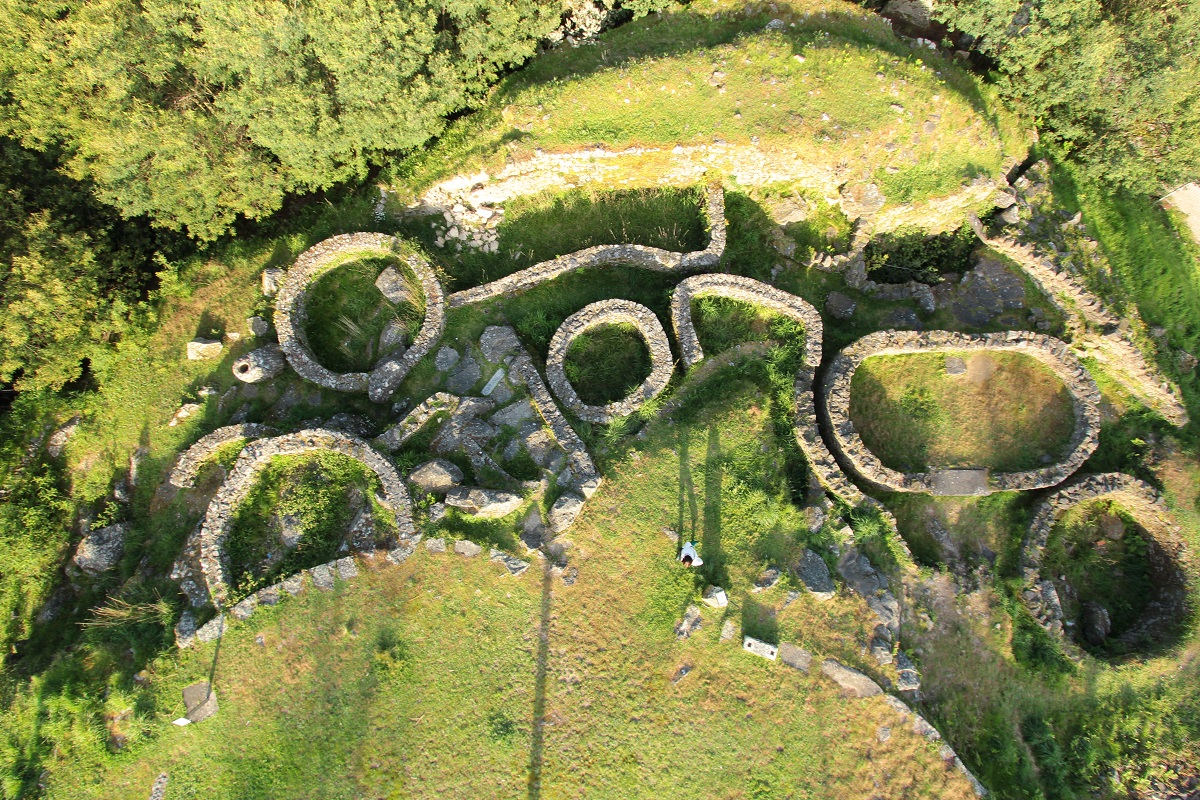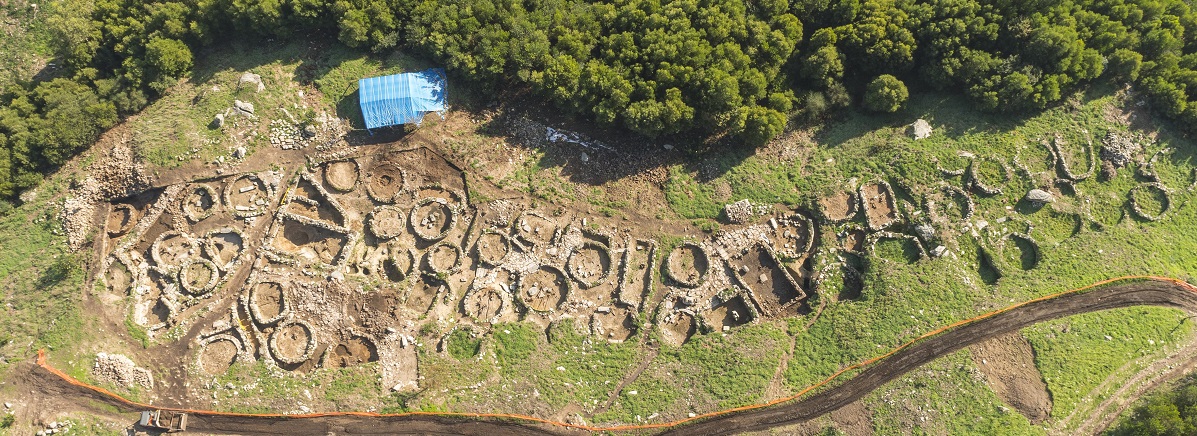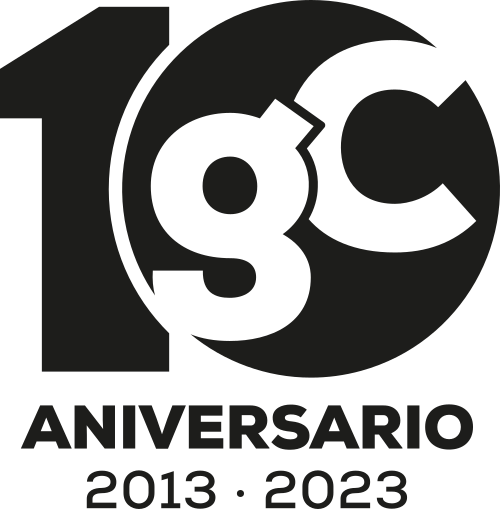Calm seaside villages, fortified Castros (celtic hill-forts) in high hill summits. From commercial to those engaged in fish salting settlements. From the Castreño world to the Roman world. The program “In search of Galician-Roman footprint” allows us to discover 18 interesting settlements in the province of Pontevedra. Each one has its own story and everyone has a distinctive feature that invites you to get to know them all.

In Campo Lameiro, the castro of Penalba is strong tied to the petroglyphs. In fact, we can find here the ‘Pedra da Serpe’ (snake stone), an important printmaking that tells much about the beliefs of the Iron Age peoples.
In Tui, on the hillside of Aloia Mont, Alto dos Cubos castro (celtic hill-fort) is dated from the third century BC. Since its first excavations in 1933, it has been very well known for its ‘Cyclopean wall‘. This wall is 1,250 meters long and we have not been able to date it accuarately yet.
Regarding to the jewelry, the Coto de Altamira castro (celtic hill-fort) stands out, it is located in As Neves and it is rich in bronze figures as a cow, a pig and a representation of the god Mercury, all of them are preserved in the Museum of Pontevedra. Toiriz castro in Silleda and Da Rise Castro in Marin are located on two separate hills. The last one has several petroglyphs.
The importance of landscape is a common fact in all castreños villages. And good example of this is the Alto da Cruz do Castro, in Cotobade, situated on a hill in times in which there were several stone crosses.
‘In search of Galician-Roman footprint” allows us to discover 18 interesting settlements in Pontevedra
In Castrolandín in Cuntis, there are circular houses combined with other rectangular ones from the Roman era. All this located on land that is bathed by Galo river. Meanwhile, A Cabeciña, in Oia, offers spectacular sea views.
But among the great jewels of the Celtic hill-forts heritage in the province of Pontevedra, stands out among them, the Troña castro, in Ponteareas, a historic monument since 1949. It has a spectacular defensive wall and had its splendor between centuries BC and II A.D. It was first excavated in 1922 and today the Dulce Nombre de Jesús chapel presides the town.
Among the maritime settlements, the catalog is vast and diverse. Adro Vello castro is in O Grove next to Carreiro beach. In A Lanzada (Sanxenxo), the village is known for hosting one of the oldest salting factories. The same happened with the Mercado dos Mouros, in Valga, which became a Roman port. Alobre castro in Vilagarcìa stands out among the seaside castros.

Among the castros (celtic hill-forts) located in high mountains is Monte do Castro, in Ribadumia, between the parishes of Leiro and Besomaño. In Igrexa Vella, in Valga, the castro (celtic hill-fort) gave way to a medieval monastery and later to a Benedictine monastery. And in Porta de Arcos, in Rodeiro, there is a Roman vila with its various rooms which occupies an area of over 6,000 square meters.
Two star fields close this relationship. Both are located on hills with stunning views. The first is O Facho of Donón in Cangas, overlooking the Sea of Vigo, the Cies Isles and the coast of Vela. Here more than 180 ritual stone altars were found. It is a sanctuary dedicated to the Household Roman God named Berobreo.
Santa Tegra castro (celtic hill-fort) in A Guarda has a museum which houses an important collection of pieces. It was found here since the first excavations were carried. It is considered a Historic and Artistic Monument since 1931 and the landscape from its 341 meters is a real gift for the eyes.













